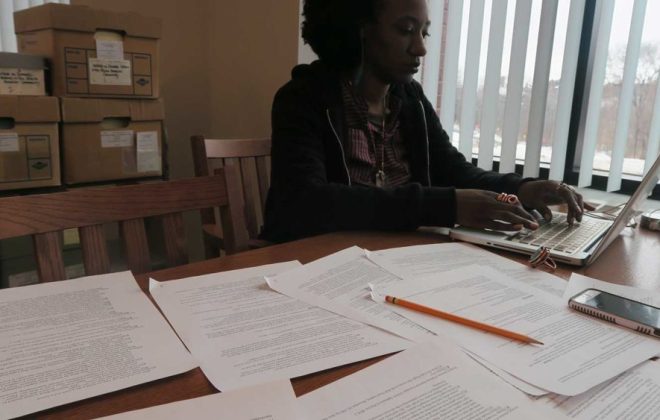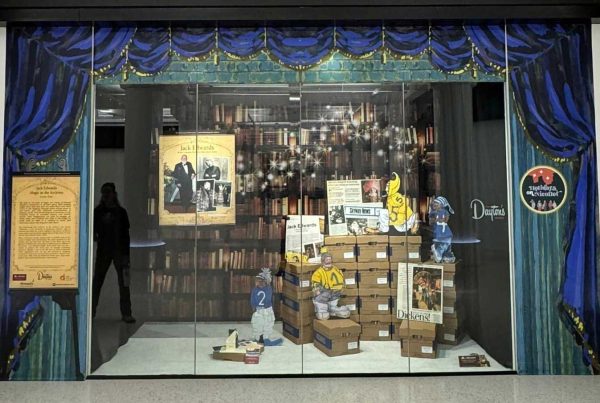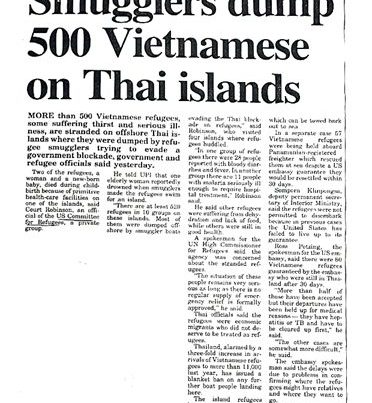By Valerie Caesar
I am Valerie Caesar, an artist and writer from Brooklyn, New York. I work in the photographic arts, and my main form of expression is street photography and video – usually candid shots of Black people in urban environments, being themselves – beautiful, tired, irascible, buoyant, solid, gifted.
Over the past couple of years, I’ve developed a video form that I like to think of as moving portraits. They are Black bodies moving in slow motion. The aim is to truly give the viewer a chance to ponder the wonder and beauty of Blackness in its myriad forms – slowly, deliberately, and with care and appreciation. Please find more of my work on my website: www.valeriecaesar.com
Valerie’s videos on Vimeo
At the heart of my artwork and my research in Minnesota is the question: What is the wonder of blackness? We’ve been told and shown by others for so long that we are NOT wonderful that it would be easy to claim it as a defiant, reactionary impulse. But it is a wonder — the objects and the energies that African Diasporan women have manifested despite the distorting and dehumanizing effects of slavery. How have we done this? The answer must be something that subverts logic, that defies the hard sciences, that transcends the ordinary will. The answer, simply, must be magic.
So this research has been an exploration of the how — what are the tools that Black people, and particularly Black women use and have used to create magic and subvert subjugation? I am interested in how Black women, using conscious and unconscious Diasporic connections with ancestral and modern methods, have shaped our urban approaches to a re-synthesis with spirit and our ability to manifest desirable personal and communal outcomes. I am investigating modern ritual practices of healing and magic.
I am looking to gather documentation on contemporary African American Diasporan urban practices for healing and manifestation that evolve from a mashup of family tradition, African religious retentions, antebellum survival traditions, European religious influences, capitalistic maneuvering, superstition, subverted queerness, addiction and trauma, etc. and evolve into expressions of visual art, music, dance, adornment, prayer, athleticism, therapy, etc. — to form ritual: the methods of personal myth making that shape our ethos, the craftsmanship of the talisman that protect us.
In approaching my research, I knew I wanted to dig into collections that explored strong, magical female characters in Black women’s literature; the paths of Black women authors themselves challenged by the limitations of their time and by supremacy and oppression; African-American spirituality and African religious retentions, especially with regard to women; ideas of female cosmic spirituality and matriarchal religions; myths about woman; women in African masking, trances, dance and festivals; Black children and their mothers (especially literature that explores this relationship); Black women in the performing arts (music, dance, comedy, etc.) especially pre-Civil Rights; Black women in the visual arts especially pre-Civil Rights; Governmental policy affecting Black women, including domestic violence, reproductive rights, housing, etc. And so much more.
With the help of collections curators and administrators like Linnea Anderson, Cecily Marcus, Kate Hujda, and others, I gathered items from the Givens Collection, University Archives and the Social Welfare History Archives. The resources for this particular arm of my research were found mainly in the Givens Collection.
In approaching the collection, I was also looking for specific ideas of themes, expressions and modalities of healing, of and by Black magic women that I wanted to explore. They are: escape (maroons, quitting jobs, leaving families); adornment (garb, masking, fashion, jewels, bling); rebellion & warfare (warriors, gangs, writing, teaching, specialized female spaces); food, medicine & herbal cultivation (soul food cooking, gardening, marijuana, urban apothecaries); storytelling (griots, group chats); family systems (including non-traditional ones like those formed on the internet); music making (drumming, jazz, hip hop); energy channeling, divination (shells, tarot, memes, blogs, social media); sexual healing (womb centered rituals around fertility and manifestation, tantra).
On my first day in the archives, I spent several hours, and made it through a total of fifteen files, out of dozens. Over the next few days, I found that the information I was exploring was so rich that I was inspired, commanded, forced to listen to the themes that kept emerging from them. They are a subset of the original proposal and a world within themselves.
The information I gathered suggested to me an arc that expressed itself in five buckets: healing living literary mentorship, the formation of a Black woman philosophy, and analysis of the societal expectations of others, including other Black women, and both the costs and the gains of making certain unorthodox choices in the name of healing.
I’m grateful for the opportunity to delve into the ephemera of such powerful ancestors. I’m looking forward to developing the insights gathered from this research mission into a book and other art projects that continue the legacy of healing literary mentorship among Black women. Please stay tuned.




